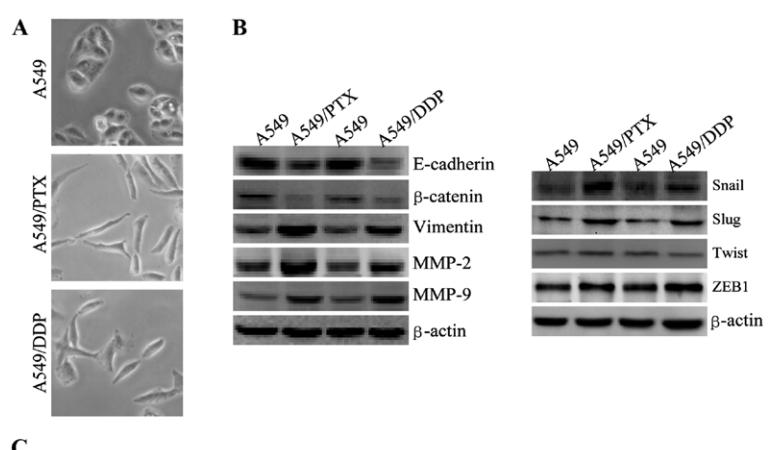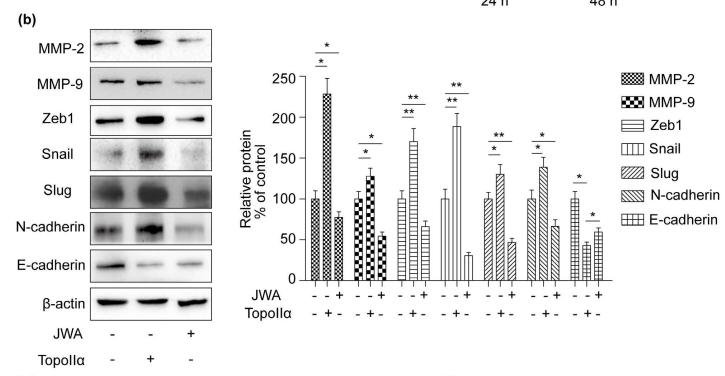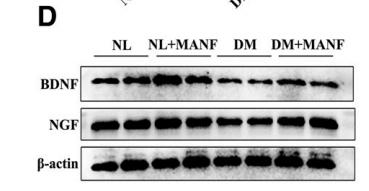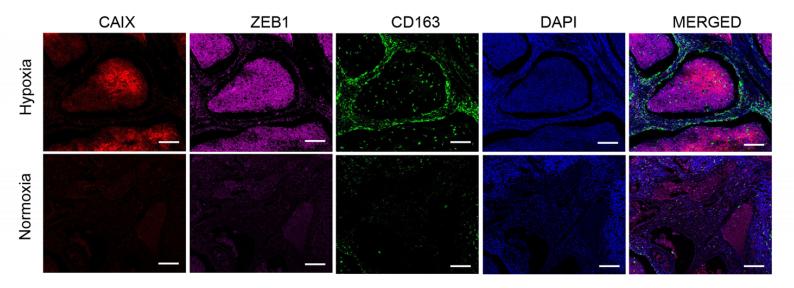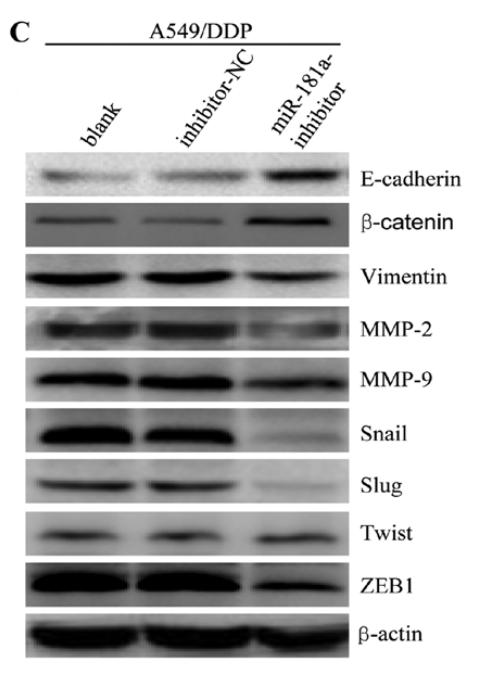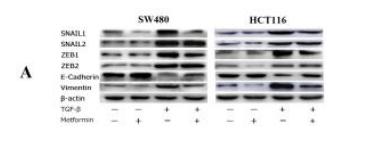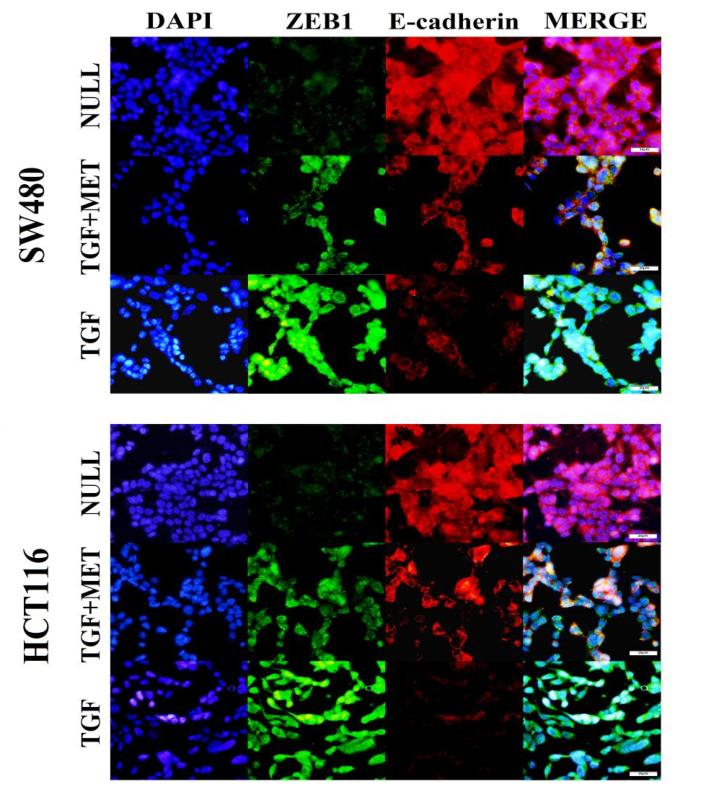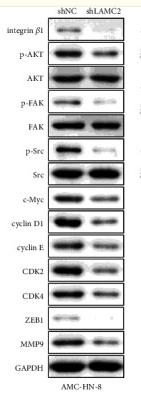ZEB1 Antibody - #DF7414
| Product: | ZEB1 Antibody |
| Catalog: | DF7414 |
| Description: | Rabbit polyclonal antibody to ZEB1 |
| Application: | WB IHC IF/ICC IHC-F |
| Cited expt.: | WB, IF/ICC |
| Reactivity: | Human, Mouse, Rat |
| Prediction: | Pig, Bovine, Sheep, Rabbit, Dog, Chicken, Xenopus |
| Mol.Wt.: | 124kDa,180kDa; 124kD(Calculated). |
| Uniprot: | P37275 |
| RRID: | AB_2839352 |
Product Info
*The optimal dilutions should be determined by the end user. For optimal experimental results, antibody reuse is not recommended.
*Tips:
WB: For western blot detection of denatured protein samples. IHC: For immunohistochemical detection of paraffin sections (IHC-p) or frozen sections (IHC-f) of tissue samples. IF/ICC: For immunofluorescence detection of cell samples. ELISA(peptide): For ELISA detection of antigenic peptide.
Cite Format: Affinity Biosciences Cat# DF7414, RRID:AB_2839352.
Fold/Unfold
AREB 6; BZP; Delta crystallin enhancer binding factor 1; DELTA EF1; FECD6; MGC133261; Negative regulator of IL 2; Negative regulator of IL2; NIL 2 A; NIL 2 A zinc finger protein; NIL 2A; NIL-2-A zinc finger protein; NIL2A; Posterior polymorphous corneal dystrophy 3; PPCD3; Represses interleukin 2 expression; TCF 8; TCF-8; TCF8; Transcription factor 8 (represses interleukin 2 expression); Transcription factor 8; ZEB 1; ZEB; ZEB1; ZEB1_HUMAN; ZFHEP; ZFHX 1A; ZFHX1A; Zinc finger E box binding homeobox 1; Zinc finger E-box-binding homeobox 1; Zinc finger homeodomain enhancer binding protein;
Immunogens
A synthesized peptide derived from human ZEB1, corresponding to a region within the internal amino acids.
Colocalizes with SMARCA4/BRG1 in E-cadherin-negative cells from established lines, and stroma of normal colon as well as in de-differentiated epithelial cells at the invasion front of colorectal carcinomas (at protein level). Expressed in heart and skeletal muscle, but not in liver, spleen, or pancreas.
- P37275 ZEB1_HUMAN:
- Protein BLAST With
- NCBI/
- ExPASy/
- Uniprot
MADGPRCKRRKQANPRRNNVTNYNTVVETNSDSDDEDKLHIVEEESVTDAADCEGVPEDDLPTDQTVLPGRSSEREGNAKNCWEDDRKEGQEILGPEAQADEAGCTVKDDECESDAENEQNHDPNVEEFLQQQDTAVIFPEAPEEDQRQGTPEASGHDENGTPDAFSQLLTCPYCDRGYKRFTSLKEHIKYRHEKNEDNFSCSLCSYTFAYRTQLERHMTSHKSGRDQRHVTQSGCNRKFKCTECGKAFKYKHHLKEHLRIHSGEKPYECPNCKKRFSHSGSYSSHISSKKCISLIPVNGRPRTGLKTSQCSSPSLSASPGSPTRPQIRQKIENKPLQEQLSVNQIKTEPVDYEFKPIVVASGINCSTPLQNGVFTGGGPLQATSSPQGMVQAVVLPTVGLVSPISINLSDIQNVLKVAVDGNVIRQVLENNQANLASKEQETINASPIQQGGHSVISAISLPLVDQDGTTKIIINYSLEQPSQLQVVPQNLKKENPVATNSCKSEKLPEDLTVKSEKDKSFEGGVNDSTCLLCDDCPGDINALPELKHYDLKQPTQPPPLPAAEAEKPESSVSSATGDGNLSPSQPPLKNLLSLLKAYYALNAQPSAEELSKIADSVNLPLDVVKKWFEKMQAGQISVQSSEPSSPEPGKVNIPAKNNDQPQSANANEPQDSTVNLQSPLKMTNSPVLPVGSTTNGSRSSTPSPSPLNLSSSRNTQGYLYTAEGAQEEPQVEPLDLSLPKQQGELLERSTITSVYQNSVYSVQEEPLNLSCAKKEPQKDSCVTDSEPVVNVIPPSANPINIAIPTVTAQLPTIVAIADQNSVPCLRALAANKQTILIPQVAYTYSTTVSPAVQEPPLKVIQPNGNQDERQDTSSEGVSNVEDQNDSDSTPPKKKMRKTENGMYACDLCDKIFQKSSSLLRHKYEHTGKRPHECGICKKAFKHKHHLIEHMRLHSGEKPYQCDKCGKRFSHSGSYSQHMNHRYSYCKREAEERDSTEQEEAGPEILSNEHVGARASPSQGDSDERESLTREEDEDSEKEEEEEDKEMEELQEEKECEKPQGDEEEEEEEEEVEEEEVEEAENEGEEAKTEGLMKDDRAESQASSLGQKVGESSEQVSEEKTNEA
Predictions
Score>80(red) has high confidence and is suggested to be used for WB detection. *The prediction model is mainly based on the alignment of immunogen sequences, the results are for reference only, not as the basis of quality assurance.
High(score>80) Medium(80>score>50) Low(score<50) No confidence
Research Backgrounds
Acts as a transcriptional repressor. Inhibits interleukin-2 (IL-2) gene expression. Enhances or represses the promoter activity of the ATP1A1 gene depending on the quantity of cDNA and on the cell type. Represses E-cadherin promoter and induces an epithelial-mesenchymal transition (EMT) by recruiting SMARCA4/BRG1. Represses BCL6 transcription in the presence of the corepressor CTBP1. Positively regulates neuronal differentiation. Represses RCOR1 transcription activation during neurogenesis. Represses transcription by binding to the E box (5'-CANNTG-3'). Promotes tumorigenicity by repressing stemness-inhibiting microRNAs.
Nucleus.
Colocalizes with SMARCA4/BRG1 in E-cadherin-negative cells from established lines, and stroma of normal colon as well as in de-differentiated epithelial cells at the invasion front of colorectal carcinomas (at protein level). Expressed in heart and skeletal muscle, but not in liver, spleen, or pancreas.
Belongs to the delta-EF1/ZFH-1 C2H2-type zinc-finger family.
Research Fields
· Human Diseases > Cancers: Overview > Transcriptional misregulation in cancer.
· Human Diseases > Cancers: Overview > MicroRNAs in cancer.
· Human Diseases > Cancers: Specific types > Prostate cancer. (View pathway)
References
Application: WB Species: human Sample: PLC/PRF/5 cells
Application: IF/ICC Species: human Sample: human cervical cancer tissues
Application: WB Species: human Sample: hypoxic cancer cells
Application: WB Species: human Sample: A549 cells
Application: WB Species: human Sample: A549/PTX cells
Application: WB Species: human Sample: SW480 and HCT116 cells
Application: IF/ICC Species: human Sample: SW480 and HCT116 cells
Application: WB Species: human Sample: EECs
Restrictive clause
Affinity Biosciences tests all products strictly. Citations are provided as a resource for additional applications that have not been validated by Affinity Biosciences. Please choose the appropriate format for each application and consult Materials and Methods sections for additional details about the use of any product in these publications.
For Research Use Only.
Not for use in diagnostic or therapeutic procedures. Not for resale. Not for distribution without written consent. Affinity Biosciences will not be held responsible for patent infringement or other violations that may occur with the use of our products. Affinity Biosciences, Affinity Biosciences Logo and all other trademarks are the property of Affinity Biosciences LTD.


